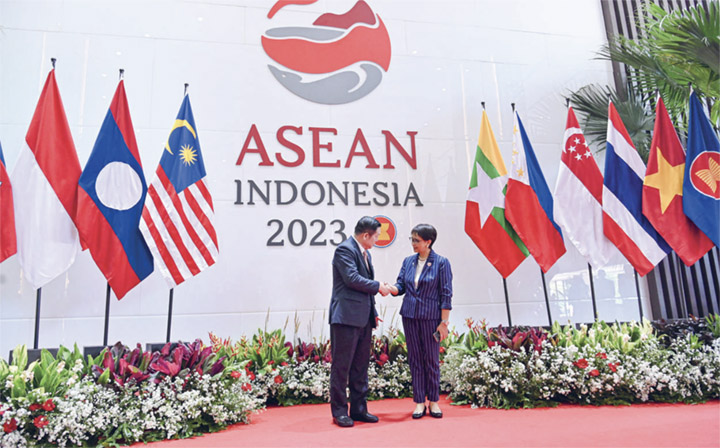Jakarta, IO – Despite numerous difficulties, such as the conflict between Russia and Ukraine and the global economic downturn, Indonesia, which will host the G20 in 2022, was successful in getting the high-level conference held in Bali on November 15– 16 to result in a joint declaration, known as the G20 Bali Leaders’ Declaration. This demonstrates how Indonesia has aimed to be a uniting force amid global unrest under President Joko Widodo.
Indonesia has now turned its attention and concentration to its upcoming major challenge: leading ASEAN in 2023. The previous four times were in 1976, 1996, 2003, and 2011, making this Indonesia’s fifth term as ASEAN Chair. At the ASEAN Summit in November of last year, Cambodia turned over the ASEAN Chair to Indonesia.
While Indonesia chairs the biggest regional forum of Southeast Asian nations, there are at least a few significant problems it will encounter. These include bringing ASEAN member states together on global concerns, fostering regional cooperation, and fostering multilateralism.
ASEAN’s Centrality Status
Following the end of the Cold War, ASEAN has developed into a powerful player in the process of peace and development in the Asia-Pacific region as well as the rest of the globe. In order to strengthen its internal cohesion and encourage community building, ASEAN relies on the “ASEAN Spirit” and “ASEAN Way,” which are based on the “5Cs” (Consultation; Consensus; Caring; Firmness, Cornerstone; Unity, Consolidation). The network made possible by economic globalization encourages regional and sub-regional cooperation and achieves rapid economic growth. ASEAN has consistently bolstered its “central position” in balancing major powers and coordinating all stakeholders in the affairs of the Asia-Pacific region by increasing its economic and diplomatic influence.

As part of its process of opening up to and integrating with the rest of the world, China has actively expanded its relations with Southeast Asian countries and ASEAN organizations during the past 40 years. An important route for China’s peripheral cooperation is now Southeast Asia. By establishing and bolstering dialogue partnerships, discussing and enhancing the establishment of a free trade area, and ratifying and implementing the Declaration on the Conduct of Parties in the South China Sea (DOC). The “Comprehensive Strategic Partnership” has built a solid multilateral and multi-networked framework for regional cooperation and assisted the Asia-Pacific region in its economic growth.
Most Southeast Asian nations chose Japan, the United States, or South Korea as their top export destinations and trading partners at the conclusion of the Cold War. China now accounts for 25% to 40% of all commercial partners among ASEAN nations, making it the biggest. China accounts for around 1/5 of ASEAN’s international commerce in products. In-depth economic and commercial integration between the two sides has also been established at the local level, and the “capillaries” connecting the two markets are far more entwined than in other nations and regions. Interconnection will be easier to arrange if the “Trans-Asian Railway” stretch between China and Laos opens in early 2022.
Vietnam’s position in the global supply chain has improved recently, and the two countries’ industrial cooperation has been closer as a result. Vietnam is also in a position to take on many production capacity transfers from Chinese businesses. Singapore handles a significant portion of China’s intercontinental commerce, and around 70% of investment and funding transfers to nations along the “Belt and Road” are made there. China has been Singapore’s top trading partner for nine years running, starting in 2013. China’s imports from Singapore would be US$38.79 billion in 2021, up 22.7% annually.
China imported $9.33 billion worth of goods from Singapore in the first quarter of 2022, up 5.8% over the same period the previous year. For nine years in a row, Singapore has also been China’s top source of new investment. Singapore will really invest $10.33 billion in China in 2021, up 34.5% from the previous year. Singapore had made a total of US$124 billion in real investments in China as of March 2022.

